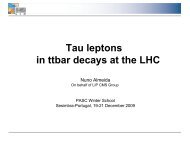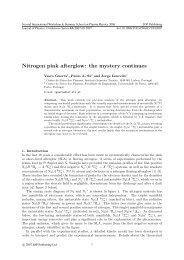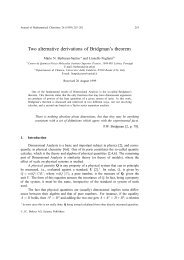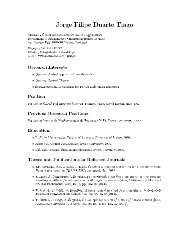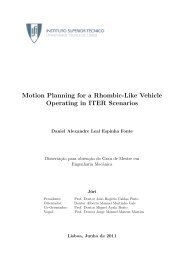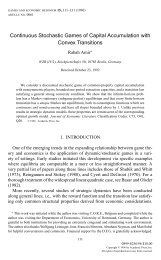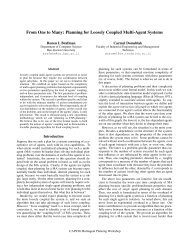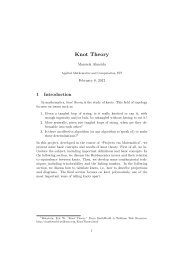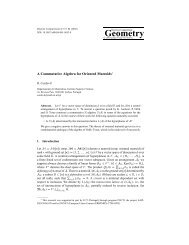Introduction to supergeometry
Introduction to supergeometry
Introduction to supergeometry
Create successful ePaper yourself
Turn your PDF publications into a flip-book with our unique Google optimized e-Paper software.
• allowing for higher degrees: let V be a graded vec<strong>to</strong>r space with only finitely many<br />
non-zero homogeneous components, all of which are finite dimensional. Formal 1 cohomological<br />
vec<strong>to</strong>r fields on V are in one-<strong>to</strong>-one correspondence with L ∞ -algebra<br />
structures on V .<br />
• allowing for a non-trivial base: let A be a vec<strong>to</strong>r bundle over a manifold M. Cohomological<br />
vec<strong>to</strong>r fields on A[1] are in one-<strong>to</strong>-one correspondence with Lie algebroids<br />
structures on A. This observation is due <strong>to</strong> Vaintrob [23].<br />
Definition 3.6. A graded manifold endowed with a cohomological vec<strong>to</strong>r field is called a differential<br />
graded manifold, or dg manifold for short.<br />
A morphism of dg manifolds is a morphism of graded manifolds, with respect <strong>to</strong> which the<br />
cohomological vec<strong>to</strong>r field are related.<br />
Remark 3.7. Morphisms of dg manifolds can be defined equivalently by requiring that the<br />
corresponding morphisms between the algebra of smooth functions is a chain map with respect<br />
<strong>to</strong> the differentials given by the cohomological vec<strong>to</strong>r fields.<br />
Remark 3.8. So far we elaborated on the condition [Q, Q] = 0 mostly from an algebraic<br />
perspective. However, it has also geometric significance, as we will see now. Assume X is a<br />
graded vec<strong>to</strong>r field of degree k on a graded manifold M. We want <strong>to</strong> construct the flow of X,<br />
i.e. solve the ordinary differential equation<br />
dx i (t)<br />
dt<br />
in a coordinate chart of M, where X is given by<br />
n∑<br />
i=1<br />
= X i (x(t)) (2)<br />
X i<br />
∂<br />
∂x i .<br />
Observe that the degree of the components X i is |x i |+k. Consequently we have <strong>to</strong> assign degree<br />
−k <strong>to</strong> the time parameter t in order for the two sides of the flow equation <strong>to</strong> have the same<br />
degree. Although we will not introduce the concept of maps between graded manifolds until<br />
Section 5, let us mention that one can think of the solution of equation (2) as a map<br />
R[k] → M.<br />
Now, assume that X is of degree +1. This implies that t is of degree −1 and hence squares <strong>to</strong><br />
zero. The expansion of the flow with respect <strong>to</strong> t looks like<br />
x i (t) = x i + tv i<br />
where v i is of degree |x i | + 1. On the one hand, this implies<br />
dx i (t)<br />
dt<br />
= v i<br />
1 Formal cohomological vec<strong>to</strong>r fields are elements of the completion of the space of vec<strong>to</strong>r fields with respect<br />
<strong>to</strong> the degree, i.e. one considers Ŝ(V ∗ ) ⊗ V instead of S(V ∗ ) ⊗ V . The subset of (ordinary) cohomological vec<strong>to</strong>r<br />
fields corresponds <strong>to</strong> L ∞-algebra structures on V whose structure maps V ⊗n → V [1] vanish for all but finitely<br />
many n.<br />
7




